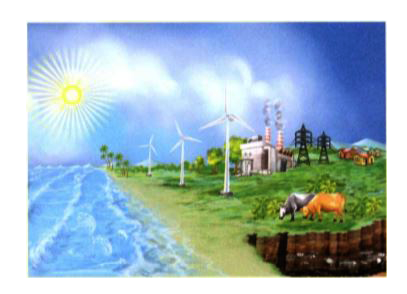Solids, liquids and gases
Step by step video & image solution for Solids, liquids and gases by Physics experts to help you in doubts & scoring excellent marks in Class 6 exams.
Topper's Solved these Questions
- BOOK - ICSECHAPTER - MODEL TEST PAPERS EXERCISE - TEST PAPER II (SECTION II) Picture study1videos
MODEL TEST PAPERS
- BOOK - ICSECHAPTER - MODEL TEST PAPERS EXERCISE - TEST PAPER II (SECTION II) Numerical questions2videos
MODEL TEST PAPERS
- BOOK - ICSECHAPTER - MODEL TEST PAPERS EXERCISE - TEST PAPER II (SECTION II) Short answer questions.3videos
MODEL TEST PAPERS
- BOOK - ICSECHAPTER - MATTEREXERCISE - Picture Based Questions2videos
MATTER
- BOOK - ICSECHAPTER - PHYSICAL QUANTITIES AND MEASUREMENT EXERCISE - Picture-Based Questions1videos
PHYSICAL QUANTITIES AND MEASUREMENT
Similar Questions
In which of the three states of matter - solids, liquids or gases is the movement of atoms about their own position. Give a reason for the same.
View SolutionState which of the three states of matter i.e. solids, liquids or gases - have
a] No definite volume b] A definite shape c] High density e] No free surfaces f] Particles - which diffuse very easily.View SolutionIonic bond is defined as the electrostatic force of attraction holding the oppositely charged ions. Ionic compounds are mostly crystalline solid having high melting and boiling points, electrical conductivity in moleten state, solubility in water etc. Covalent bond is defined as the force which binds atoms of same or different elements by mutual sharing of electrons in a covalent bond. Covalent compounds are solids, liquids or gases. They have low melting and boiling points compounds. They are more soluble in non-polar solvents.
The amount of energy released when one mole of ionic solid is formed by packing of gaseous ion is called :View SolutionIonic bond is defined as the electrostatic force of attraction holding the oppositely charged ions. Ionic compounds are mostly crystalline solid having high melting and boiling points, electrical conductivity in moleten state, solubility in water etc. Covalent bond is defined as the force which binds atoms of same or different elements by mutual sharing of electrons in a covalent bond. Covalent compounds are solids, liquids or gases. They have low melting and boiling points compounds. They are more soluble in non-polar solvents.
The amount of energy released when one mole of ionic solid is formed by packing of gaseous ion is called :View SolutionIonic bond is defined as the electrostatic force of attraction holding the oppositely charged ions. Ionic compounds are mostly crystalline solid having high melting and boiling points, electrical conductivity in moleten state, solubility in water etc. Covalent bond is defined as the force which binds atoms of same or different elements by mutual sharing of electrons in a covalent bond. Covalent compounds are solids, liquids or gases. They have low melting and boiling points compounds. They are more soluble in non-polar solvents.
The valence electrons are involved in formation of covalent bonds is /are called :View SolutionIonic bond is defined as the electrostatic force of attraction holding the oppositely charged ions. Ionic compounds are mostly crystalline solid having high melting and boiling points, electrical conductivity in moleten state, solubility in water etc. Covalent bond is defined as the force which binds atoms of same or different elements by mutual sharing of electrons in a covalent bond. Covalent compounds are solids, liquids or gases. They have low melting and boiling points compounds. They are more soluble in non-polar solvents.
The valence electrons are involved in formation of covalent bonds is /are called :View SolutionIonic bond is defined as the electrostatic force of attraction holding the oppositely charged ions. Ionic compounds are mostly crystalline solid having high melting and boiling points, electrical conductivity in moleten state, solubility in water etc. Covalent bond is defined as the force which binds atoms of same or different elements by mutual sharing of electrons in a covalent bond. Covalent compounds are solids, liquids or gases. They have low melting and boiling points compounds. They are more soluble in non-polar solvents.
Which of the following is arranged order of increasing boiling point ?View SolutionIonic bond is defined as the electrostatic force of attraction holding the oppositely charged ions. Ionic compounds are mostly crystalline solid having high melting and boiling points, electrical conductivity in moleten state, solubility in water etc. Covalent bond is defined as the force which binds atoms of same or different elements by mutual sharing of electrons in a covalent bond. Covalent compounds are solids, liquids or gases. They have low melting and boiling points compounds. They are more soluble in non-polar solvents.
Which of the following is arranged order of increasing boiling point ?View SolutionExplain the arrangement of particles in liquids and gases.
View SolutionIdentify a solid , a liquid and a gas in the picture given below :
a. Solid :____
b.Liquid:____
c.Gas: ____
 View Solution
View Solution

